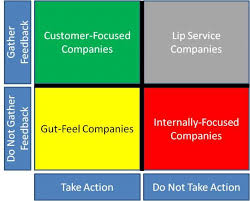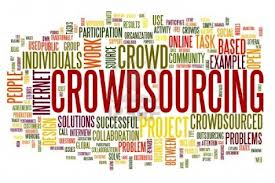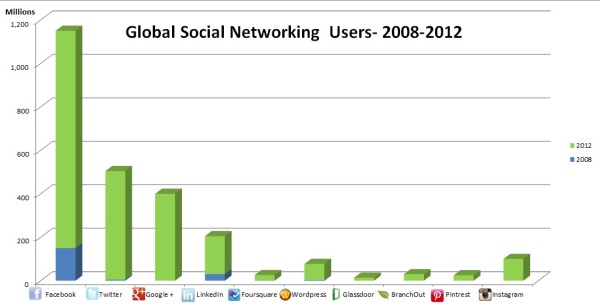
Marketing has become an integral part of talent strategy. The use of messages and branding to foster engagement, attract candidates and retain employees have resulted in some organizations thoughtfully and others inadvertently, developing Employee Value Propositions (EVP’s). EVP’s are messages that articulate what an employee can expect when they work for the company. The promises. Most of the messages, in one way or another, tend to emphasize employee development and career progression (like the image above). Branding supplements the message by offering visual images of what an employee can experience when they’re in the organization.
The ability to deliver against EVP’s can have a tangible impact on both talent sourcing and retention. Talent functions must realize the authenticity of an EVP will be compared to real employee experiences through social media channels. Research has shown there is a direct correlation between employee reviews on social media and job application follow through. In a recent US study of more than 4,600 job seekers; almost 50% of them used social sites like Glassdoor to research the company as part of their job search strategy1. Employee reviews have greater influence on which companies candidates will choose that more closely aligns with their values. In the example below the EVP advertised career progression, but the employee review exposed this as a misrepresentation. Candidates who value career advancement may choose not to apply to that company based on the review.

EVP is important to retain your current talent bench. Consider the following true story and how it reflects on the genuineness of the EVP.
 A friend of mine choose to work at a company that articulated messages of career progression and development in the job description, website, branding and interview processes. As an employee, she worked hard to build great relationships and develop her skill set. Messages about commitment to career development and progression were continuously communicated in town halls, intranet sites, emails and corporate communications. After a few years she felt ready to move to the next level within her career tract. With consistently great performance reviews, she anticipated an easy conversation with her Manager on formulating a plan. She raised the subject about career advancement. Her boss listened to her and after a brief pause said; “You’ll need some of these first (pointing to her grey hair) if you want to move up.” In one short sentence the conversation had ended. The employee had taken her Manager’s comments as a clear message that seniority was equal to age. She knew she would not be advancing anytime soon.
A friend of mine choose to work at a company that articulated messages of career progression and development in the job description, website, branding and interview processes. As an employee, she worked hard to build great relationships and develop her skill set. Messages about commitment to career development and progression were continuously communicated in town halls, intranet sites, emails and corporate communications. After a few years she felt ready to move to the next level within her career tract. With consistently great performance reviews, she anticipated an easy conversation with her Manager on formulating a plan. She raised the subject about career advancement. Her boss listened to her and after a brief pause said; “You’ll need some of these first (pointing to her grey hair) if you want to move up.” In one short sentence the conversation had ended. The employee had taken her Manager’s comments as a clear message that seniority was equal to age. She knew she would not be advancing anytime soon.
Completely disengaged, within three months she resigned and went to a direct competitor.
Of course not every employee is pegged for progression. However, this story is reflective of a top performer who believed the company was committed to advancement, irrespective of age. The revelation that the EVP was false (from her perspective) resulted in her becoming disconnected, disengaged and demotivated. No surprise, she does not endorse this company as a great place to work to her network or family. This is a tangible example that the smaller the gap between your EVP promise and delivery; the higher your retention rate can be.
Now that we’ve seen authenticity matters, what can your organization do to create a genuine EVP’s?
- Solicit feedback/crowdsource regularly to understand what works and what can be improved – Don’t rely on annual engagement surveys to assess how people feel. Solicit genuine feedback regularly through different mediums. Highlight what is working and document what could be improved.

- Action feedback to address gaps – I can’t stress this enough. Feedback is abundant on ways to improve. Yet so often nothing is done to actually address it. Demonstrate you are listening to your employees by actioning feedback. If you don’t it will be seen as disingenuous.
- Update your EVP with endorsed content – Your EVP is only genuine if your employees endorse it. Update it with validated content so it is authentic.
- Revisit your EVP every 3-5 years to align it to your strategy – The workforce is changing. Your strategy changes. Your EVP should be reflective of your strategy.
- Use employees to promote genuine EVP messages through social media channels – Many companies are afraid of employee reviews on social media sites. They tend to want to “shut it down” or ignore it, hoping it will go away. Instead embrace social media sites and build it into your strategy. Provide alternative, genuine experiences on sites like Glassdoor and Indeed to help job seekers make an informed decision about your company.
 There are lots of opportunities to build genuine EVP’s. I hope these few ideas will help you to start thinking about ways to develop authentic messages!
There are lots of opportunities to build genuine EVP’s. I hope these few ideas will help you to start thinking about ways to develop authentic messages!
I would love to hear from you. Feel free to contact me ![]() @annzalie.barrett or
@annzalie.barrett or ![]() LinkedIn.
LinkedIn.



 company or out there (in your industry). The start of the new year should also be the start of new relationships. Take some time to build networks both within and outside your organization. I am a firm believer that different perspectives can help you make a more informed decision about what’s happening both beside you and around you. How about making a goal to network with six people this year? That’s one every two months. Perhaps three people internally and three people externally. Maybe they’re acquaintances that you casually interact with that you would like to get to know better. Build you networks through LinkedIn, Twitter and/or Google+. Pick a few people and reach out to them. If you can’t meet in person, set up a virtual coffee. Building and cultivating your network can be an important step in helping you make connections to realize your end goals.
company or out there (in your industry). The start of the new year should also be the start of new relationships. Take some time to build networks both within and outside your organization. I am a firm believer that different perspectives can help you make a more informed decision about what’s happening both beside you and around you. How about making a goal to network with six people this year? That’s one every two months. Perhaps three people internally and three people externally. Maybe they’re acquaintances that you casually interact with that you would like to get to know better. Build you networks through LinkedIn, Twitter and/or Google+. Pick a few people and reach out to them. If you can’t meet in person, set up a virtual coffee. Building and cultivating your network can be an important step in helping you make connections to realize your end goals.








 Every company has a vested interest in promoting how great they are. They want to you buy their product and/or attract top talent. Crowdsourced reviews are powerful because they are authentic. They are reflective of genuine experiences from a variety of people who have interacted with the company.
Every company has a vested interest in promoting how great they are. They want to you buy their product and/or attract top talent. Crowdsourced reviews are powerful because they are authentic. They are reflective of genuine experiences from a variety of people who have interacted with the company.

 It’s my opinion that companies should be grateful for crowdsourcing through sites like TripAdvisor and Glassdoor. Think about it. Customers and employees at no cost; are providing companies with feedback on what they’re doing well and what they can improve on.
It’s my opinion that companies should be grateful for crowdsourcing through sites like TripAdvisor and Glassdoor. Think about it. Customers and employees at no cost; are providing companies with feedback on what they’re doing well and what they can improve on.
 Companies cannot ignore crowdsourcing’s impact on the bottom line any longer. Smart companies will acknowledge suggestions and make improvements to demonstrate they are listening. This willingness to change also builds credibility as reviews validate changes.
Companies cannot ignore crowdsourcing’s impact on the bottom line any longer. Smart companies will acknowledge suggestions and make improvements to demonstrate they are listening. This willingness to change also builds credibility as reviews validate changes.





 The group talked about how talent strategy and recruitment has been shifting over the last couple of years due to technology innovation, mobile, social media and Millenials entering the workforce. With so much activity happening electronically the amount of data available to be captured, deciphered and analyzed can be astounding, not to mention overwhelming. Some of the participants said they had a hard time figuring out where to start. As the roundtable continued we also talked about the shift from relying on RMS data to using data warehouses and/or HRMS’ which integrate data from a variety of different sources. The focus on using big data to help articulate ROI in the form of human capital metrics was still an area all our companies continue to work through. As I reflect on our conversations I realized that human capital metrics also needs to evolve to include new skills such as engagement and collaboration to reflect the modern workforce.
The group talked about how talent strategy and recruitment has been shifting over the last couple of years due to technology innovation, mobile, social media and Millenials entering the workforce. With so much activity happening electronically the amount of data available to be captured, deciphered and analyzed can be astounding, not to mention overwhelming. Some of the participants said they had a hard time figuring out where to start. As the roundtable continued we also talked about the shift from relying on RMS data to using data warehouses and/or HRMS’ which integrate data from a variety of different sources. The focus on using big data to help articulate ROI in the form of human capital metrics was still an area all our companies continue to work through. As I reflect on our conversations I realized that human capital metrics also needs to evolve to include new skills such as engagement and collaboration to reflect the modern workforce. related roles. Newer generations such as Millennials rely on collaboration and crowd sourcing techniques to complete work and build relationships. As reliance on virtual interaction and engagement play a greater role in attraction and retention, collaboration is fast becoming an essential skill for all jobs across organizations, especially leadership and management roles. Let’s look at two human capital metrics that can evolve to give credit to this skill.
related roles. Newer generations such as Millennials rely on collaboration and crowd sourcing techniques to complete work and build relationships. As reliance on virtual interaction and engagement play a greater role in attraction and retention, collaboration is fast becoming an essential skill for all jobs across organizations, especially leadership and management roles. Let’s look at two human capital metrics that can evolve to give credit to this skill. individual and organizational performance.
individual and organizational performance. using other public avenues to share information and voice opinions about the company.
using other public avenues to share information and voice opinions about the company. influencing recruitment approaches. It has higher visibility because it’s a front line operational function that can measure results. Talent management also needs to embrace changes and recognize that newer generations bring different skills to the table. Using static measures that don’t incorporate or recognize these new skills can impact performance management, succession planning and retention. Employees will continue to assess their employment offer promise and evaluate how closely it aligns with reality.
influencing recruitment approaches. It has higher visibility because it’s a front line operational function that can measure results. Talent management also needs to embrace changes and recognize that newer generations bring different skills to the table. Using static measures that don’t incorporate or recognize these new skills can impact performance management, succession planning and retention. Employees will continue to assess their employment offer promise and evaluate how closely it aligns with reality.


 uptake on social media platforms (as shown). As they enter the workforce they have an expectation they will use some sort of social media platform (internal or external) in their job to collaborate and/or communicate. As a result companies have started to transform the way they communicate, engage and collaborate internally.
uptake on social media platforms (as shown). As they enter the workforce they have an expectation they will use some sort of social media platform (internal or external) in their job to collaborate and/or communicate. As a result companies have started to transform the way they communicate, engage and collaborate internally.












